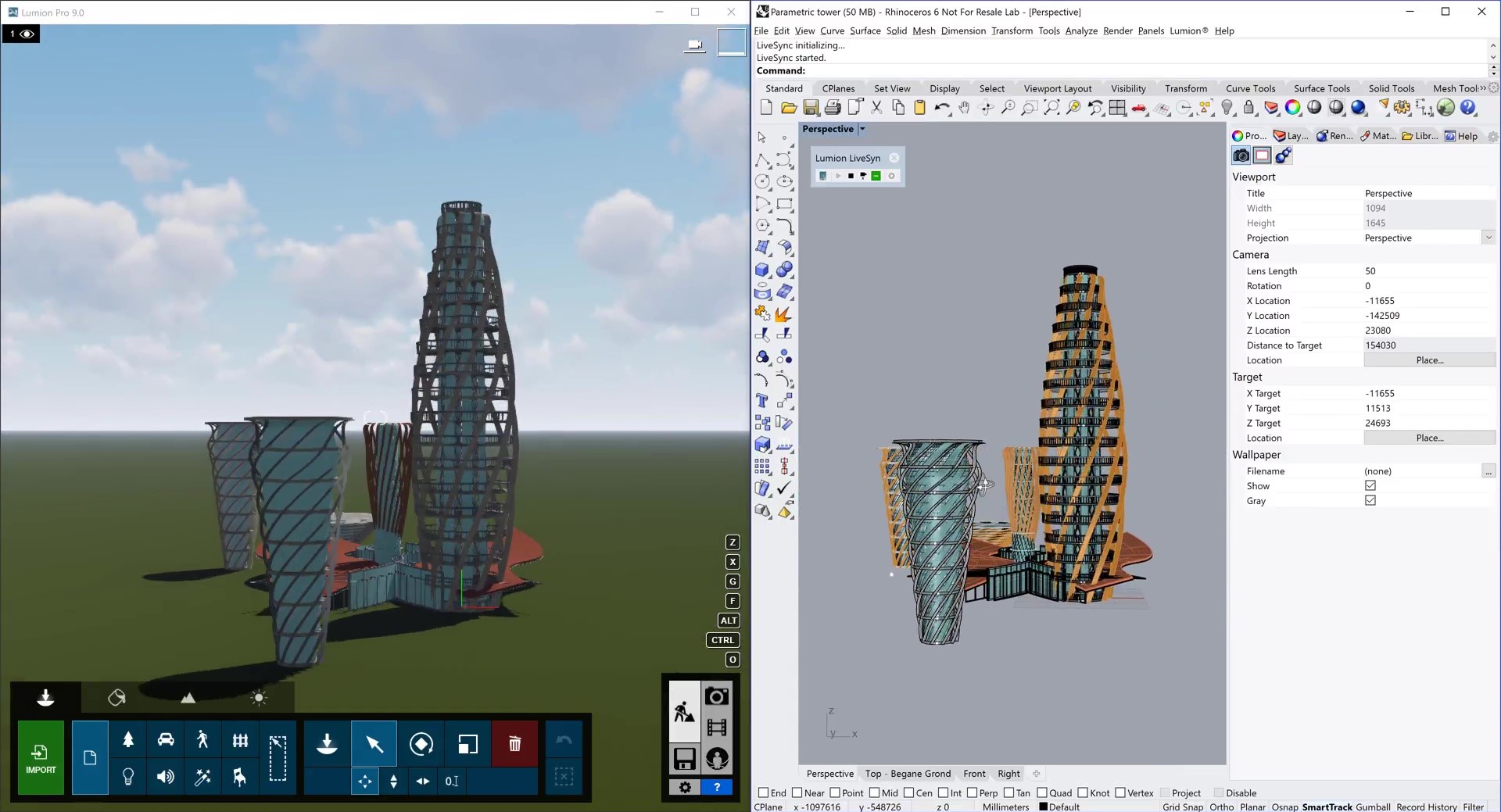
- #REVIT TO LUMION EXPORTER HOW TO#
- #REVIT TO LUMION EXPORTER SOFTWARE#
- #REVIT TO LUMION EXPORTER SERIES#
- #REVIT TO LUMION EXPORTER DOWNLOAD#
- #REVIT TO LUMION EXPORTER FREE#
Putting them on the same effect causes mayhem. **Pro Tip** To control multiple models with different variations you will need to add a Variation Control effect for each. Why would this not be the same as the new layers effect?! Now, you can view and change your Revit model in real-time in Lumion, as well as export a Collada (.DAE) file from Revit and import (or re-import) it seamlessly into Lumion. It is essentially the old layers effect with a slider. Faster Revit rendering with one plug-in The Lumion LiveSync for Revit plug-in includes two features LiveSync and a Collada (.DAE) exporter. It allows you the handling of UV's, section-boxes, split faces, painted faces and Decals. The program enables you to save your model in a format that Lumion can directly read.
#REVIT TO LUMION EXPORTER FREE#
One unfortunate aspect of Model Variations is the effect that controls them in camera and video modes. Revit To Lumion Bridge is a free add-on that allows you to export your models from Autodesk Revit. This definitely helps reduce the amount of layers we use. Right now, you are limited to 10 model variations per model.

This makes it much easier to manage phases, materials, and design options within a Lumion project. This allows you yo flip between options without taking up multiple layers. When you load in a model you can load in multiple version of it (or "Variations"). We are stills stuck with the measly 20 layer limit, but, Lumion 8 introduces model "Variations".įor us Revit users.
#REVIT TO LUMION EXPORTER SERIES#
Of course, I would trade off 6 minute renderings for the inability to use the computer during each rendering but it can be frustrating if you are exporting an image set (10 renderings at 6 minutes is an hour of not using your computer!).Ĭlick here for a series of tutorials about rendering still images in Lumion.Over the last three years I have been asking for more layers (or a better layer management system) within Lumion. Clicking off of Lumion pauses the rendering until you click back in. I would like the ability to chose at least a few other file types at higher resolutions (at least PNG and TIFF?)Īnother annoyance when rendering is you must keep Lumion running and cannot click out of the program. The typical "poster size" rendering is a massive 126 MB! This creates incredibly large Photoshop files as well. Bitmap is not my favorite image file type for the simple reason that it is HUGE. Above 1920x1080 you can only export to a Bitmap (.bmp) file. When you want to create a rendering over 1920x1080 your exported file options are limited. and no extra development work was done to support Revit-exported FBX files. The aforementioned test between my desktop and laptop illustrated the speed at which high resolution renderings can be created using Lumion. 5 If you are exporting data into 3ds Max or Maya then please use Okinos. Lumion gives you the ability to export the following rendering channels: Rendering out these channels enhances post production immensely. I have complained many times about how Revit does not allow you to render out different channels (z-depth, alpha, render material IDs, reflection, refraction, etc.). This is a little pro-tip for those of you render nerds out there.
#REVIT TO LUMION EXPORTER DOWNLOAD#
You won't have to re-apply or modify any of your materials either!Ĭlick here to download the Revit add-in. If you change the model, simply export and override the file. Simply export, import, and tweak materials. The process is similar to exporting a Revit model into Navisworks. Well, Lumion now has a free add-in for Revit that makes the link between Revit and Lumion extremely easy and fast. Unfortunately, that is the case with most external visualization tools. Well, if you have seen that eBook you would know the process is far from seamless.
#REVIT TO LUMION EXPORTER HOW TO#
One of the bonus items in BIM After Dark - Volume 1 is an eBook where I illustrate how to take a Revit model and import it into CryEngine 3 ( here is an example of the sample project). Rendered Image Shown Above (Everything Max 7680x4320): Here is a comparison of real-time versus rendered time of each machine: Workstation Laptop: Intel i7 Quad Core 2.9GHZ, 32GB RAM, Solid State hard drive, and nVidia K5100M (8GB) graphics card.ĭesktop #2: Intel i7 4.0GHZ, 32 GB RAM, Solid State, nVidia GTX670 (4GB) The two computers I am using Lumion on are as follows:Ĭustom Desktop (a few years old): Intel i7 Quad Core 3.0GHZ, 32GB DDR3 RAM, solid state hard drive, and a 3 year old 1GB ATI graphics card. The only improvement you can make is ditching that stupid expensive workstation graphics card for a little less stupid expensive gaming card. If you have a computer built to run extremely well using Revit you already have a setup to scream on Lumion.
#REVIT TO LUMION EXPORTER SOFTWARE#
There is an entire science behind video games and how they can produce such incredible graphics with very little computing resources (compared to software like Revit).


The benefits of using a gaming style engine is that rendering is basically already complete.


 0 kommentar(er)
0 kommentar(er)
